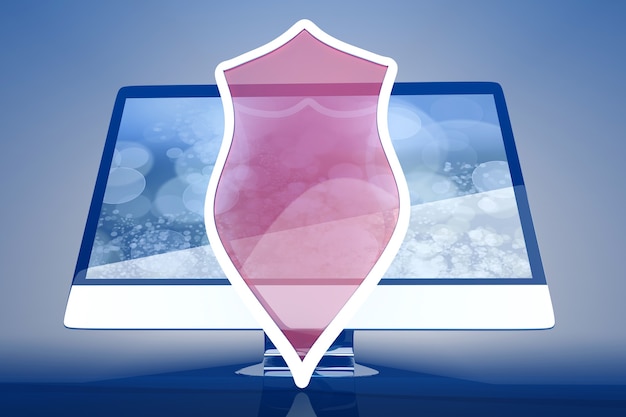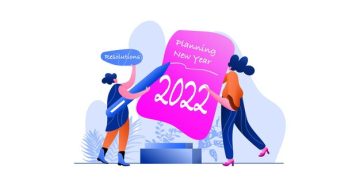Protect Your Finances: Identity Theft and Fraud Strategies for 2025

In 2025, safeguarding your finances from identity theft and fraud requires a multi-faceted approach, combining advanced technology protections with proactive personal strategies to minimize risk and ensure financial security.
In an increasingly digital world, the threat of identity theft and fraud looms larger than ever. Preparing for 2025 requires a proactive and informed approach to protect your hard-earned money. This article will guide you through essential personal strategies for protecting your finances from identity theft and fraud in 2025, ensuring you stay one step ahead of cybercriminals.
Understanding the Evolving Landscape of Financial Threats
The nature of financial threats is constantly changing. What worked to protect your finances a few years ago might not be sufficient in 2025. Understanding current trends is the first step in building a robust defense.
The Rise of AI-Powered Scams
Artificial intelligence is now being used by cybercriminals to create more sophisticated and convincing scams. Be aware of phishing attempts that leverage realistic-sounding voices or deepfake videos to trick you into divulging personal information.
Another trend is the manipulation of data through AI to gain unauthorized access to financial accounts. Strong passwords and multi-factor authentication are crucial defenses against these advanced techniques.
- Stay updated on the latest scam tactics reported by the Federal Trade Commission (FTC).
- Be skeptical of unsolicited communications, especially those requesting personal information.
- Invest in cybersecurity software that utilizes AI to detect and block fraudulent activities.
The digital landscape is also seeing a rise in synthetic identity fraud, where criminals combine real and fabricated information to create new identities for fraudulent purposes. Protecting your credit history and monitoring your credit report are crucial for identifying and preventing this type of fraud.
In conclusion, understanding the evolving threat landscape requires continuous learning and adaptation. By staying informed and implementing proactive security measures, you can minimize the risk of becoming a victim of financial fraud in the coming years.
Strengthening Your Online Security Posture
Your online security is the foundation of your financial protection. Weak passwords, unsecure networks, and outdated software create vulnerabilities that criminals can exploit. Take immediate steps to fortify your digital defenses.

Ensure all your accounts have strong, unique passwords. Use a password manager to securely store and generate complex passwords that are difficult to crack. Never reuse the same password across multiple accounts.
Implementing Multi-Factor Authentication (MFA)
With MFA, even if someone obtains your password, they will need a second form of verification to access your account. This could be a code sent to your phone, a biometric scan, or a security key.
Enable MFA on all accounts that offer it, especially financial accounts, email, and social media. This adds an extra layer of protection that significantly reduces the risk of unauthorized access.
- Use a reputable authenticator app for generating MFA codes.
- Regularly review your MFA settings to ensure they are up-to-date.
- Be cautious of SMS-based MFA, which can be vulnerable to SIM swapping attacks.
In addition to strong passwords and MFA, maintaining updated software and using a secure network is critical. Software updates often include security patches that address known vulnerabilities. Similarly, using a virtual private network (VPN) when connecting to public Wi-Fi can encrypt your data and protect it from eavesdropping.
These measures, combined with vigilance in spotting phishing attempts and other online scams, will greatly enhance your online security and protect your financial information.
Monitoring Your Financial Accounts Regularly
Regular monitoring of your financial accounts is critical for early detection of fraudulent activities. By promptly identifying suspicious transactions, you can take immediate action to minimize losses and prevent further damage.
Set up alerts for all your financial accounts, including bank accounts, credit cards, and investment accounts. These alerts should notify you of any unusual activity, such as large transactions, foreign purchases, or new account openings. Review these alerts promptly.
Checking Your Credit Report
Your credit report contains information about your credit history, including your payment history, outstanding debts, and credit inquiries. Reviewing your credit report regularly can help you identify any unauthorized accounts or fraudulent activity.

You are entitled to one free credit report per year from each of the three major credit bureaus: Equifax, Experian, and TransUnion. Stagger your requests throughout the year to monitor your credit report more frequently.
- Dispute any inaccurate or fraudulent information on your credit report immediately.
- Consider placing a credit freeze on your credit report to prevent new accounts from being opened in your name.
- Be wary of services that offer “free” credit reports but require you to sign up for a paid subscription.
Regularly reviewing your bank statements and credit card statements is another important step. Look for any transactions that you don’t recognize, even small ones. Contact your bank or credit card company immediately if you suspect any fraudulent activity.
In summary, proactive monitoring, combined with prompt action when suspicious activity is detected, is essential for protecting your finances from fraud and identity theft.
Securing Your Personal Information Offline
While online security is crucial, it’s equally important to protect your personal information offline. Physical documents and careless habits can leave you vulnerable to identity theft. Proper document management is key.
Shred any documents that contain sensitive information, such as bank statements, credit card bills, and medical records, before discarding them. Invest in a high-quality shredder that cross-cuts documents into small, unreadable pieces.
Protecting Your Mail
Mail theft is a common method used by identity thieves to obtain personal information. Take steps to protect your mail from being stolen.
Consider investing in a locking mailbox to prevent mail theft. Promptly remove mail from your mailbox after delivery. If you’re going to be away for an extended period, have your mail held at the post office.
- Opt for electronic statements and bills whenever possible to reduce the amount of sensitive mail you receive.
- Be cautious of unsolicited offers and promotions received through the mail, especially those requesting personal information.
- Report any suspected mail theft to the U.S. Postal Inspection Service.
In addition to protecting your mail, be cautious about sharing your personal information with others. Never provide sensitive information over the phone or through email unless you initiated the contact and are confident that you are communicating with a legitimate entity.
By taking these offline security measures, you can significantly reduce your risk of becoming a victim of identity theft and fraud. Remember, protecting your personal information is an ongoing process that requires diligence and awareness.
Leveraging Technology for Financial Protection
Technology can be a powerful tool for protecting your finances. A variety of apps and services are available to help you monitor your accounts, detect fraud, and secure your personal information. Use these tools to your advantage.
Consider using a credit monitoring service to track your credit report and alert you to any changes. These services can help you detect fraudulent activity early, such as new accounts opened in your name or unauthorized credit inquiries.
Utilizing Fraud Detection Apps
Many banks and credit card companies offer fraud detection apps that use artificial intelligence to identify suspicious transactions. These apps can alert you to any unusual activity and allow you to quickly report fraudulent charges.
Explore the features offered by your financial institutions and enable any fraud detection tools that are available. These tools can provide an extra layer of protection against fraud and identity theft.
- Use a virtual credit card number when making online purchases to protect your actual credit card number.
- Install a reputable antivirus and anti-malware software on your computer and mobile devices.
- Consider using a password manager to securely store and manage your passwords.
In addition to these tools, stay informed about the latest security threats and vulnerabilities. Follow cybersecurity news and blogs to learn about emerging scams and how to protect yourself. Share this information with your friends and family to help them stay safe as well.
By leveraging technology and staying informed, you can create a robust defense against financial fraud and identity theft. Remember, vigilance and proactive measures are key to protecting your financial well-being.
Staying Informed and Educated
The world of financial fraud and identity theft is constantly evolving, so staying informed is crucial. By understanding the latest scams and security threats, you can better protect yourself and your finances.
Follow reputable sources of information about cybersecurity and financial fraud. The Federal Trade Commission (FTC), the Consumer Financial Protection Bureau (CFPB), and the National Cyber Security Centre (NCSC) are excellent resources.
Attending Workshops and Seminars
Consider attending workshops and seminars on identity theft and fraud prevention. These events can provide valuable insights and practical tips for protecting your finances.
Many community organizations and financial institutions offer free workshops and seminars on these topics. Take advantage of these opportunities to learn more about protecting yourself from fraud.
- Subscribe to newsletters and email alerts from reputable cybersecurity organizations.
- Follow cybersecurity experts and influencers on social media.
- Regularly review your security settings on your online accounts.
In addition to staying informed, educate your friends and family about the risks of identity theft and fraud. Share what you know and encourage them to take steps to protect themselves.
By staying informed and educated, you can become a proactive advocate for your own financial safety and help others protect themselves as well. Remember, knowledge is power when it comes to combating fraud and identity theft.
| Key Point | Brief Description |
|---|---|
| 🔒 Strong Passwords | Use unique, complex passwords for all accounts. |
| 📱 Multi-Factor Authentication | Enable MFA for added security layers. |
| 📊 Monitor Accounts | Regularly review your bank and credit card statements. |
| 🛡️ Secure Mail | Shred sensitive documents and protect your mailbox. |
Frequently Asked Questions (FAQ)
▼
The first step is to create strong, unique passwords for all your online accounts and enable multi-factor authentication (MFA) wherever possible. This significantly reduces the risk of unauthorized access.
▼
You should check your credit report at least once a year. You can obtain a free credit report from each of the three major credit bureaus annually: Equifax, Experian, and TransUnion.
▼
Immediately report the incident to the Federal Trade Commission (FTC) and contact your bank and credit card companies. Consider placing a fraud alert on your credit report and changing all your passwords.
▼
Be skeptical of unsolicited emails and phone calls. Never provide personal information unless you initiated the contact. Verify the sender’s identity before clicking on any links or attachments.
▼
It’s best to avoid using public Wi-Fi for online banking. If you must use it, connect to a virtual private network (VPN) to encrypt your data and protect it from eavesdropping.
Conclusion
Protecting your finances from identity theft and fraud in 2025 requires a proactive and comprehensive approach. By implementing strong security measures both online and offline, monitoring your accounts regularly, and staying informed about the latest threats, you can significantly reduce your risk and safeguard your financial well-being.





